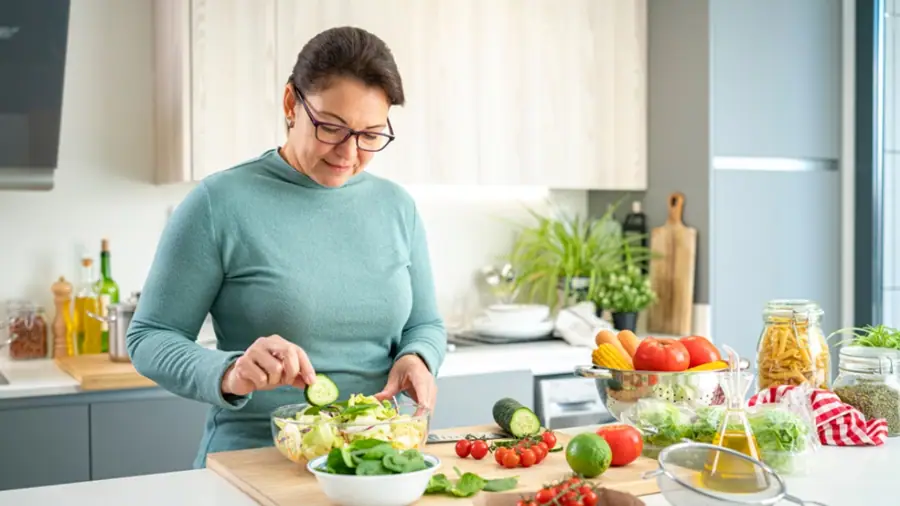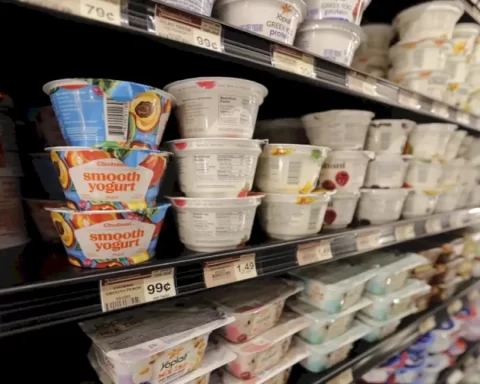New Delhi, Oct 27 (Diabetes UK) We know that everyone’s experience of diabetes is different. Whether you’re living with diabetes or care for a loved one who does, we’re here for you.
It is still important to make healthier food choices. Research tells us that there are even certain foods that are linked to reducing the risk of type 2 diabetes.
Here are our top tips for healthier food choices you can make, to reduce your risk of type 2 diabetes.
Eating with diabetes
If you, or someone in your family, has type 1, type 2 or another type of diabetes, you’ll know that it can sometimes be difficult to know what to eat.
Start here for the key information you need to make healthy food choices for a balanced diet of type 2 diabetes.
I have type 2 diabetes – What can I eat?
If you’ve just been diagnosed with type 2 diabetes, one of the first things you might be worried about is food.
You’re likely to be faced with what seems like an endless list of new tasks. Medical appointments, taking medication, stopping smoking, being more active and eating a healthy, balanced diet – it can all seem so daunting and overwhelming. With so much to take in at once and all the myths about diabetes and food that you’ll probably hear, it can be hard to know what to do.
We can’t tell you exactly what to eat, but we can get you started with some options to try for breakfast, lunch and dinner. Planning ahead when it comes to food could help you feel less overwhelmed and more in control.
What’s the diabetes diet?
There is no such thing as a special diet exclusively for people with type 2 diabetes. No two people with diabetes are the same. So there isn’t a one-size-fits-all way of eating for everyone with diabetes.
In the past, people with type 2 diabetes were sent away after their diagnosis with a list of foods they weren’t allowed to eat, or often told to cut out sugar. But our advice is to make healthier choices more often, and only have treats occasionally and in small portions.
Because we know that making healthier food choices is important to manage your diabetes and to reduce your risk of diabetes complications, like heart problems and strokes, and other health conditions including certain types of cancers.
Try and make changes to your food choices that are realistic and achievable so you’ll stick with them. This will be different for everyone, depending on what you eat now and the goals you want to achieve. Here are some examples of goals – think about yours and write them down if that helps:
- ‘I want to reach my target blood sugar level’
- ‘I want to reduce my cholesterol levels (blood fats)’
- ‘I want good blood pressure’
- ‘I want to be a healthy weight’
- ‘I want to be in diabetes remission’.
You’re more likely to achieve your goals if you get some support – whether that’s from your healthcare team, your family and friends or other people with diabetes. There are millions of people with type 2 diabetes wondering what they can eat – you’re not alone in this.
Diabetes diet plans to lose weight
If you’re overweight, finding a way to lose weight has huge benefits. It can help you manage your blood sugar, blood pressure and cholesterol levels. And there’s strong evidence to suggest that losing extra weight can put your type 2 diabetes into remission. We know this is more likely nearer to you being diagnosed, so find out everything you can about remission and speak to your healthcare team about it.
There are different ways to lose weight, like a low-carb diet, Mediterranean diet and very low-calorie diets.
We haven’t created low- or very low-calorie meal plans as these could be challenging using foods. Most people who follow these diets use special meal replacement products which are nutritionally complete. If you chose to try a low-calorie diet, speak to your GP or nurse first, especially if you use medication like insulin.
Breakfast ideas when you have diabetes
Diabetes won’t stop you from enjoying your food, but knowing some simple hacks and swaps will help you choose healthier options and make planning your meals a little easier. These ideas may not look much different from what you eat already, and your favourite recipes and meals can usually be adapted to be healthier without you noticing too much difference.
Here are some healthy breakfast ideas to choose from:
- a bowl of wholegrain cereal with milk
- two slices of wholegrain toast with olive oil-based spread
- a pot of natural unsweetened yogurt and fruit
- two slices of avocado with a hardboiled egg.
Lunch ideas when you have diabetes
Here are some healthy lunch ideas to choose from:
- a chicken or tuna salad sandwich
- a small pasta salad
- soup with or without a wholegrain roll
- a piece of salmon or tuna steak and salad.
Think about having a piece of fruit or a pot of natural unsweetened yogurt afterwards too.
Dinner ideas when you have diabetes
Here are some healthy dinner ideas to choose from:
- lasagne and salad
- roast chicken and vegetables, with or without potatoes
- beef stir-fry and vegetables, with or without brown rice
- chicken tortillas and salad
- salmon and vegetables, with or without noodles
- curry with chickpeas and brown rice
Can I eat fruit?
Yes, whole fruit is good for everyone and if you have diabetes, it’s no different. You shouldn’t avoid them because they’re sugary. Fruits do contain sugar, but it’s natural sugar. The sugar in whole fruit is different to the added sugar in things like chocolate, biscuits and cakes or other free sugar found in fruit juices and smoothies.
Other things to avoid are foods labelled ‘diabetic’ or ‘suitable for diabetics’, and eating too much red and processed meat or highly processed carbs like white bread. Cutting down on these means you’re reducing your risk of certain cancers and heart diseases.
Can I snack in between meals?
Some people with type 2 diabetes hear about hypos (when your blood sugar gets too low) and think they need to eat snacks to avoid them. But this isn’t the case for everyone.
You don’t need to eat snacks if you’re not taking any medication for your type 2 diabetes. If you treat your diabetes with medication that puts you at risk of hypos, like insulin, you may need a snack to prevent a hypo. But if you find you’re having to snack a lot to prevent hypos, talk to your healthcare team so they can give you more advice.
Snacking in general can make it harder to manage a healthy weight though, which is really important for managing your diabetes. So if you do feel like a snack, go for a healthier option like carrot sticks and hummus or some dark chocolate rice cakes.
Benefits of following a low-carb diet
One of the main benefits of following a low-carb diet is weight loss. For people with type 2 diabetes, this helps to reduce HbA1c and blood fats such as triglycerides and cholesterol. For people who don’t have diabetes, losing weight can reduce your risk of developing type 2 diabetes, and a low-carb diet is one option to help you do this.





